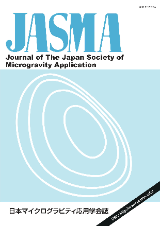Volume 10, Issue 4
TR-IA #2
Displaying 1-8 of 8 articles from this issue
- |<
- <
- 1
- >
- >|
-
1993Volume 10Issue 4 Pages 211-
Published: October 31, 1993
Released on J-STAGE: January 21, 2021
Download PDF (247K) -
1993Volume 10Issue 4 Pages 212-
Published: October 31, 1993
Released on J-STAGE: January 21, 2021
Download PDF (2336K) -
1993Volume 10Issue 4 Pages 221-
Published: October 31, 1993
Released on J-STAGE: January 21, 2021
Download PDF (1862K) -
1993Volume 10Issue 4 Pages 234-
Published: October 31, 1993
Released on J-STAGE: January 21, 2021
Download PDF (1146K) -
1993Volume 10Issue 4 Pages 241-
Published: October 31, 1993
Released on J-STAGE: January 21, 2021
Download PDF (3666K) -
1993Volume 10Issue 4 Pages 251-
Published: October 31, 1993
Released on J-STAGE: January 21, 2021
Download PDF (1455K) -
1993Volume 10Issue 4 Pages 259-
Published: October 31, 1993
Released on J-STAGE: January 21, 2021
Download PDF (1969K) -
1993Volume 10Issue 4 Pages 267-
Published: October 31, 1993
Released on J-STAGE: January 21, 2021
Download PDF (2751K)
- |<
- <
- 1
- >
- >|
